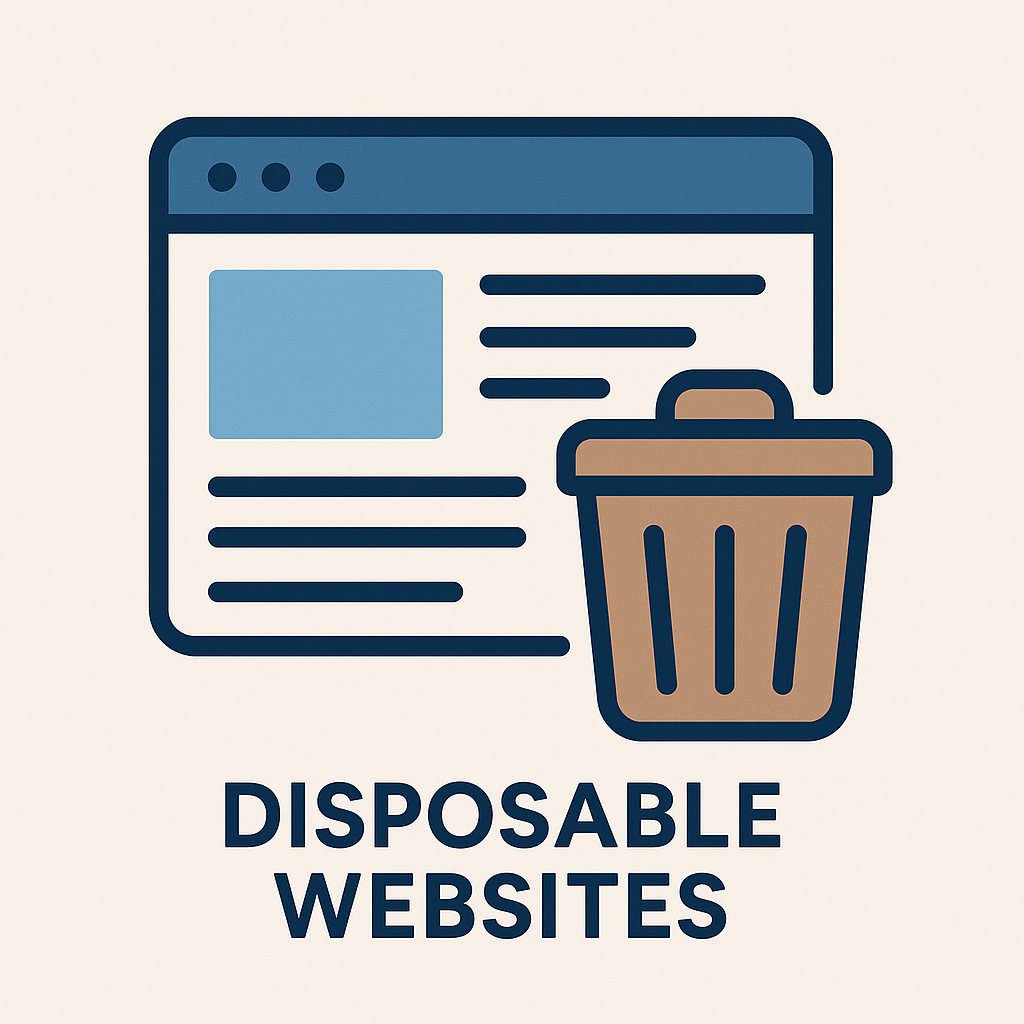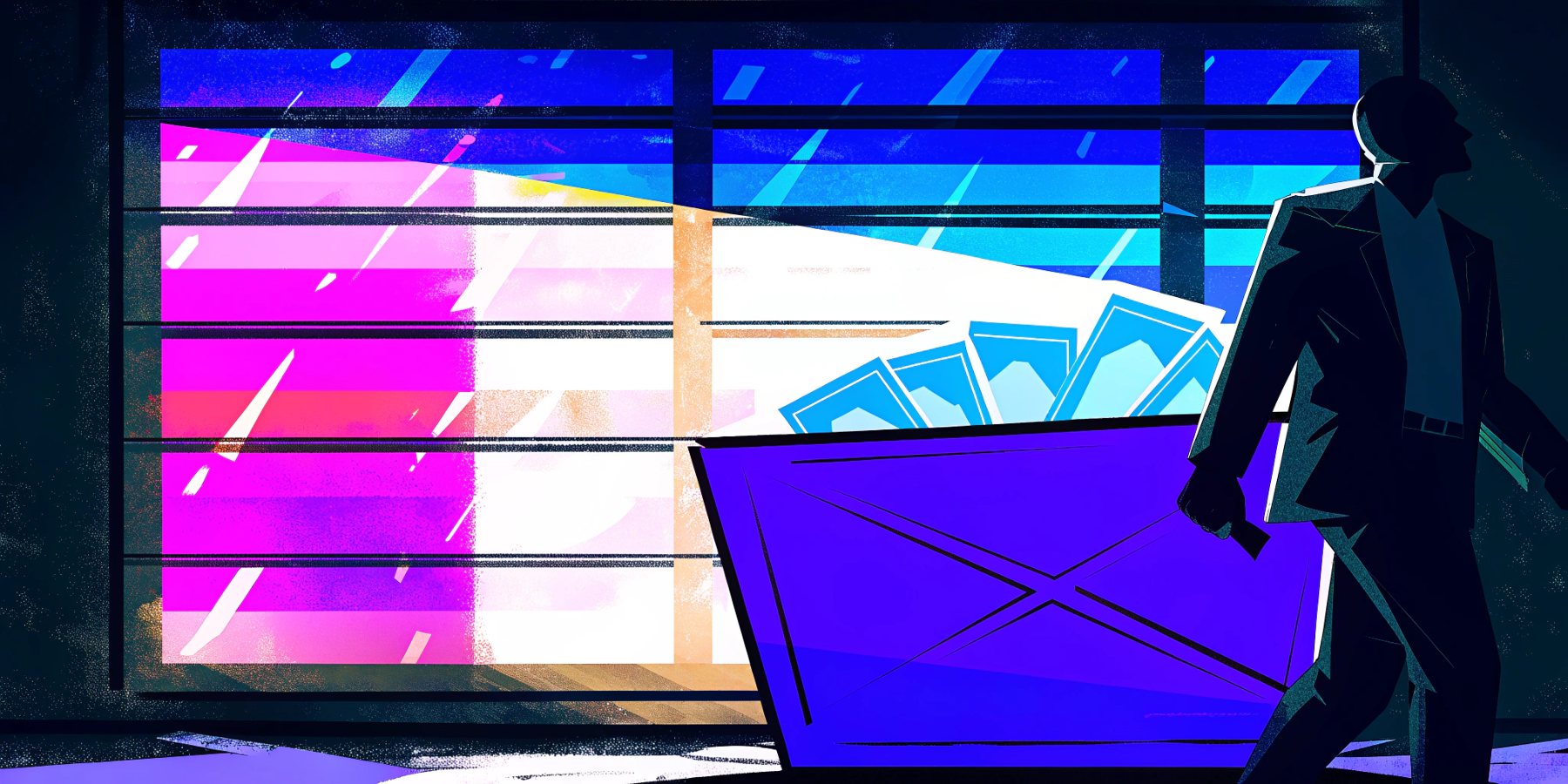The internet is full of websites that looked shiny on launch day but are now collecting dust — or worse, sitting in a digital dumpster after being replaced just a year or two later.
We call them disposable websites.
They’re the byproduct of a culture where marketing agencies treat web projects as quick-turn commodities rather than long-term business assets.
And here’s the thing: they don’t just waste money. They devalue the entire web design profession, lower client expectations, and create a vicious cycle of low-quality builds.
Our position is simple: We don’t build disposable websites — and you shouldn’t settle for one.
What Is a “Disposable Website”?
A disposable website is built for speed and appearance, not for longevity, performance, or scalability. It’s the equivalent of buying a piece of fast fashion: it looks good today, but it’s not built to last, and you’ll be replacing it far sooner than you’d like.

Common Traits of Disposable Websites
- Theme-heavy design with minimal customization beyond changing colors and swapping photos.
- Built entirely with page builders like Divi, Elementor, WP Bakery, or Beaver Builder.
- No clear content strategy or scalability plan.
- Performance bottlenecks from day one (bloated code, slow load times).
- No roadmap for integrating with marketing tools, automation, or analytics.
These sites often look fine at first glance. But they’re built to hit a launch date — not to evolve with your business.
How Disposable Websites Are Made
If you’ve ever hired a marketing agency that “also does websites,” you’ve probably encountered the disposable site playbook.
Step 1: Sell the service.
The agency’s priority is closing the deal, not solving the problem.
Step 2: Assign to a non-technical designer.
This person is talented in design tools but doesn’t write code or architect solutions.
Step 3: Pick a template or builder.
The site is built on a pre-existing theme or in a builder that requires no coding knowledge.
Step 4: Swap out colors, images, and text.
The client gets something that feels “custom” but is really just a dressed-up template.
Step 5: Launch quickly and move on.
The agency collects payment, adds the project to their portfolio, and shifts attention to the next client.
The Culture Behind Disposable Websites
Disposable websites are a symptom of a bigger problem: the devaluation of web design as a profession.
In the race to produce more, faster, and cheaper, many agencies:
- Treat websites like one-off marketing collateral rather than ongoing business infrastructure.
- Focus on aesthetics over strategy and functionality.
- Measure success by launch dates, not by ROI, conversions, or scalability.
- Avoid accountability for long-term performance.
This “fast and forget” culture isn’t just bad for clients — it’s bad for the entire industry.
The Problems With Disposable Websites
1. Poor ROI
A “cheap” site that needs replacing in two years costs more than building it right the first time.
2. Technical Debt
Builders and templates pile on unused code, poor markup, and clumsy workarounds that make updates painful.
3. Performance Drag
Slow load times hurt SEO, frustrate visitors, and decrease conversions — and these problems are baked in from day one.
4. Lock-In
Migrating away from a builder often requires a full rebuild. With tools like Divi or WP Bakery, you’re also left cleaning out shortcodes from every page.
5. Missed Opportunities
A disposable site rarely includes a content architecture that supports future growth, personalization, or advanced marketing campaigns.
The Client Experience Problem
One of the side effects of this disposable site culture is that clients approach web projects with the wrong expectations.
Instead of asking:
- How will this site help us scale?
- How will it integrate with our marketing stack?
- What’s the plan for evolving it over the next three years?
They ask:
- Do you use Divi or Elementor?
- Which theme will you use?
- Can we get it launched in four weeks?
These questions are symptoms of a market that’s been conditioned to see websites as quick-turn, disposable assets instead of foundational business tools.
Our Approach: Why We Don’t Build Disposable Websites
We approach websites as long-term investments, not one-off transactions. That means:
1. Foundation-First Mindset
We start by understanding your business model, goals, and growth plans. The architecture, not the aesthetic, comes first.
2. Custom Architecture
- No pre-made themes.
- Minimal or no builder reliance.
- Clean, modular code that can evolve with your needs.
3. Strategic Discovery
Every build includes content planning, audience mapping, and marketing integration planning.
3. Foundtional Search Engine Optimization
Many “disposable” websites are launched with zero SEO groundwork — missing titles, broken heading structures, slow load times, and no thought given to how search engines will interpret the content. These oversights guarantee poor visibility and higher costs down the road when you inevitably have to fix them.
Our builds include SEO best practices from the start: clean semantic HTML, optimized URLs, mobile-friendly layouts, structured data for rich results, and metadata logic that works across your entire site. We ensure that every page is technically sound, crawlable, and ready to perform in search. Instead of bolting SEO on later, we make it part of your website’s core architecture, so your investment grows in value over time rather than becoming another throwaway asset.
4. Future-Proofing
We use tools and platforms that are designed to last:
- Astro with a headless CMS like Storyblok for enterprise-grade scalability.
- Webflow for small-to-medium businesses that need speed and visual editing without sacrificing performance.
- Breakdance as a leaner, more maintainable option for clients who must stay on WordPress but want to avoid the worst builder pitfalls.
5. Partnership, Not a Transaction
We don’t just launch and leave. We provide ongoing optimization, training, and support — because the real work starts after your site goes live.
Why This Matters for the Web Design Profession
Disposable websites damage more than individual businesses — they damage trust in the entire industry.
When clients are repeatedly burned by poor builds:
- They become skeptical of all agencies, even the good ones.
- They assume every site is temporary and budget accordingly.
- They see web design as a commodity rather than a strategic discipline.
By refusing to build disposable websites, we raise the bar — for ourselves, for our clients, and for the industry.
Choosing Long-Term Value Over Short-Term Convenience
A website isn’t a brochure. It’s a living, evolving business asset that should support your growth for years to come.
When you settle for a disposable site, you’re not just wasting money — you’re slowing down your business.
Our philosophy is simple:
We don’t build disposable websites, we don't believe that's what clients want either. We build digital foundations that grow with your business.






